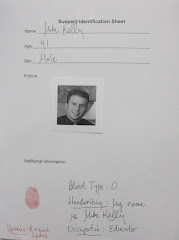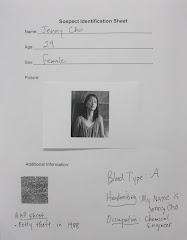1. History of Hair/Fiber Analysis
Fibers - One of the effective ways to find a criminal is to collect the fibers from the crime scene. These fibers usually fall off of the criminal's clothing. One of the first cases to require a fiber analysis was the rape and murder of Sofia Silva in 1997, and it wasn't until years later that the detectives and court realize that the forensic scientists had made a mistake with the fibers and charged the wrong man. Since then, the analysis of fibers has been further developed and has saved many innocent suspects, as well as convict the guilty.
Hairs - The analysis of hair in forensics dates back to the 1800s. Hairs provide DNA evidence at crime scenes, that can accurately pinpoint the perpetrator. The analysis of hair can also show treatments used on the hair [such as color], drugs used, and what the person has been exposed to.
2. Techniques Used to ID Hair/Fiber
Fibers - Fibers are collected and looked at under a microscope to identify. This way, it can be revealed where the fiber came from, which can eventually lead back to who left it.
Hairs - Hairs, too, are looked at under a microscope to identify different factors of the hair, such as the person's race, age, drug use, etc. However, hair analysis has more developed techniques for identification. Hair provides a calendar-like layout of different events in the form of layers in each strand of hair. Each strand can be connected to a monitor with different devices and plot out a chart, showing those events through the presence of different substances.

3. Pictures and Analysis of Pictures from Lab
Lab.
Dog hair sample.
Asian hair sample.
Color-treated hair sample.
Synthetic hair sample.
Caucasian hair sample.
African-American hair sample.
Cat hair sample.
4. Guesses/Justifications of Lab Findings
1. Ribbon
2. Thread
3. Fishing line
4. Thread
5. Rubber band
6. Fishing line












No comments:
Post a Comment